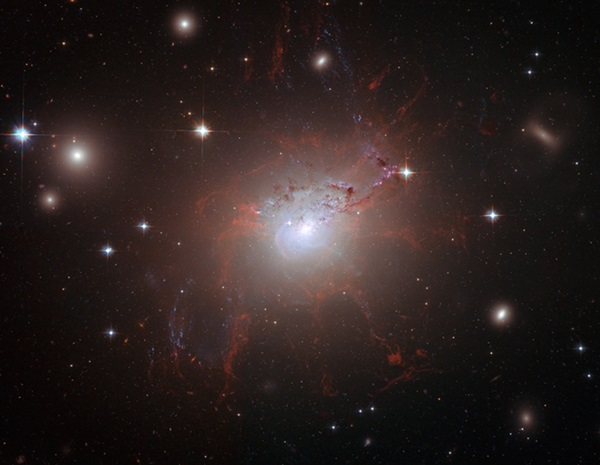Key Takeaways:
Black holes are thought to reside at the center of almost every galaxy, with some growing to more than a billion times the mass of the Sun. A team of astronomers believe that these supermassive black holes are commonplace, release more than enough energy to strip their host galaxies apart, and in the process shut down these galaxies’ star formation for good.
For many years, black holes have fascinated scientists and the public alike with their peculiar ability to warp space and time and their almost sinister tendency to devour everything they encounter. Before it falls in, as matter swirls around the black hole it forms an “accretion disk,” where it heats up and radiates energy. The supermassive black holes have such strong gravitational fields that the infalling matter releases a vast amount of energy, making each accretion disk far brighter than the combined output of the hundreds of billions of stars in the galaxy around it.
One of the consequences of this outpouring of energy is that it drives away cool gas and dust, the raw ingredients of new stars. This permanently shuts down star formation in the surrounding galaxy, dooming it to a slow death where the remaining stars age, grow red, end their lives, and are never replaced.
The new study considered the role of supermassive black holes in the development of galaxies. To search for them, the team used the Hubble Space Telescope and the Chandra X-ray Observatory to image the universe to unprecedented depth and resolution in optical, near-infrared, and X-ray light. In particular, the astronomers looked for galaxies that have a high emission of X-rays, a classic signature of black holes devouring gas and dust.
From the space telescopes’ data, Asa Bluck, of the University of Nottingham, and the other team members found that at least one-third of all massive galaxies in the universe not only contain supermassive black holes, but, at some point in their histories, the emission from the holes’ accretion disks far outshines their host galaxies. The energy output of regions around the black holes is high enough to strip apart every massive galaxy in the cosmos 25 times over while the X-ray emission from them turns out to dwarf that from every other source in the universe put together.
“We are left with a startling picture of the formation history of massive galaxies where dramatic violence in the form of the torrent of radiation from matter falling into black holes leads to the death of galaxies they inhabit,” said Bluck.










